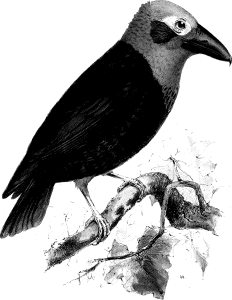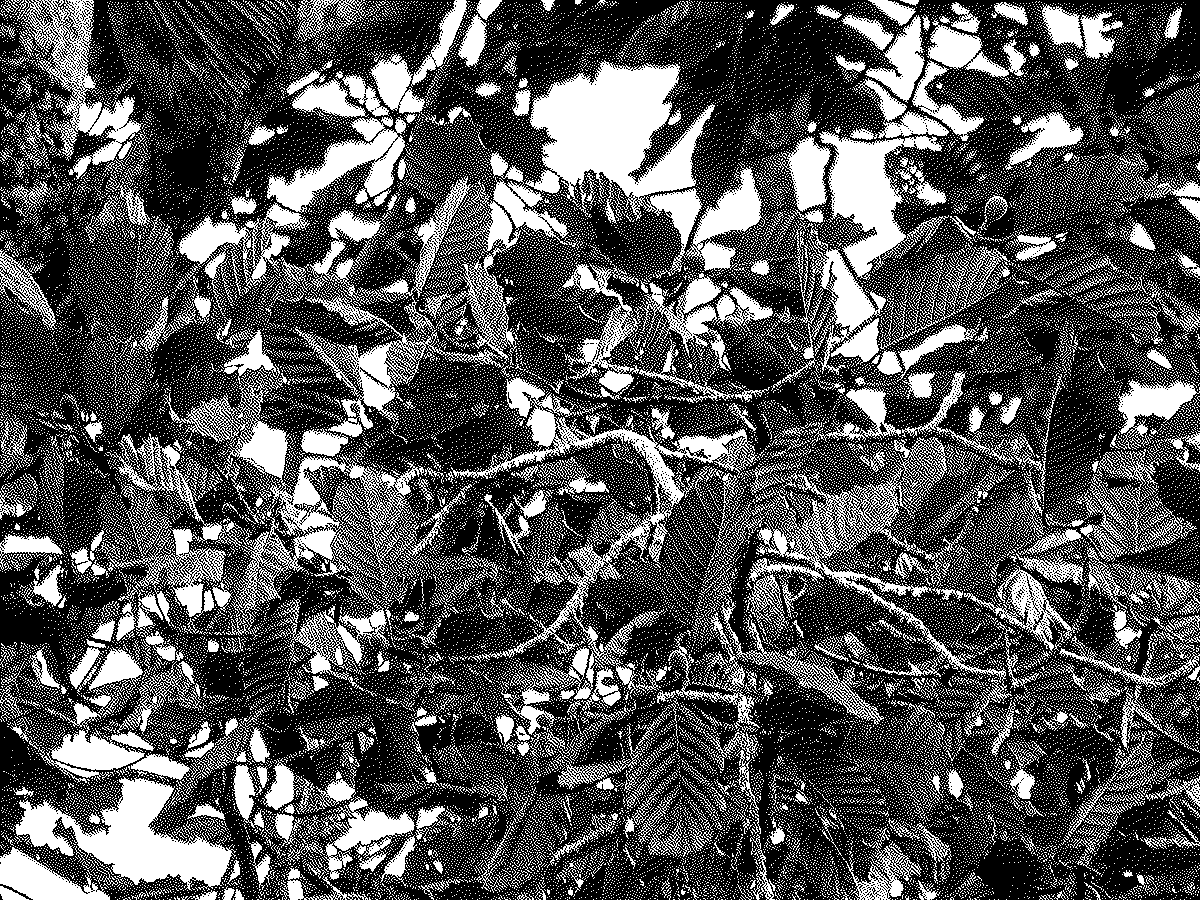
The Bornean Bristlehead (Pityriasis gymnocephala) is a bird species endemic to the island of Borneo, which is shared by Indonesia, Malaysia, and Brunei. The bird’s scientific name translates to “naked head with flaky skin,” which refers to the unique physical appearance of the bird.
The Bornean Bristlehead is a relatively large bird, measuring around 35cm in length and weighing around 200-300g. It has a distinctive appearance, with a bald head, a short, curved bill, and a crest of stiff feathers on its crown that give it a bristly appearance. The bird’s plumage is mostly black, with a white belly, a blue-grey patch on the wings, and a bright red patch of skin around its eyes.
This unusual bird is one of the most interesting and rare avian species in Southeast Asia. It is an elusive and seldom seen bird, as it inhabits the dense forests of Borneo’s lowlands, where it feeds on a variety of fruits, insects, and small animals. The Bornean Bristlehead is known to forage alone or in small groups, and its diet is thought to be quite diverse, with reports of it consuming everything from snails and insects to small birds and mammals.

The Bornean Bristlehead’s endemicity is of particular interest to birdwatchers and conservationists. Endemic species are those that are found in only one geographic area and are not found anywhere else in the world. Borneo, with its rich biodiversity and varied habitats, is home to many endemic species of plants and animals, including birds. In fact, Borneo has one of the highest numbers of bird species of any island in the world, with over 600 species recorded to date.
The Bornean Bristlehead is one of the most iconic of these endemic bird species, and it is highly valued by both birdwatchers and conservationists. Birdwatchers from all over the world travel to Borneo to catch a glimpse of this rare bird, which can be found in a few select locations on the island. Conservationists are also interested in the Bornean Bristlehead because of its status as a threatened species.
The Bornean Bristlehead is currently listed as “Vulnerable” on the International Union for Conservation of Nature’s Red List of Threatened Species. This means that the species is at risk of extinction due to a number of factors, including habitat loss, deforestation, and hunting. The forests of Borneo, which are the Bornean Bristlehead’s natural habitat, are under threat from logging, mining, and agriculture. As these forests are destroyed, the bird’s population becomes more and more fragmented, making it more vulnerable to extinction.

Conservation efforts are underway to protect the Bornean Bristlehead and its habitat. The Indonesian and Malaysian governments have established national parks and reserves on the island, which provide protected areas for the bird and its fellow endemic species. The BirdLife International Partnership, a global conservation organization, has also designated the Bornean Bristlehead as a “Priority Species,” meaning that it is one of the most threatened bird species in the world and requires urgent conservation action.
In addition to conservation efforts, ecotourism can also play a role in protecting the Bornean Bristlehead and its habitat. Birdwatchers who come to Borneo to see the bird can contribute to its conservation by supporting local businesses that promote sustainable tourism practices. By generating income for local communities, ecotourism can provide an incentive for people to protect the bird’s habitat and the forest ecosystems on which it depends.
In conclusion, the Bornean Bristlehead is a fascinating bird species that is endemic to the island of Borneo. Its unique physical appearance and elusive nature make it highly sought after by birdwatchers from around the world. However, the Bornean Bristlehead is also threatened by habitat loss and hunting, and its status as a vulnerable species highlights the need for conservation efforts.
Conservation measures such as the establishment of protected areas and sustainable ecotourism practices can help to protect the Bornean Bristlehead and its habitat. By working together to conserve this species, we can help to ensure that future generations can continue to appreciate the beauty and uniqueness of this remarkable bird.
